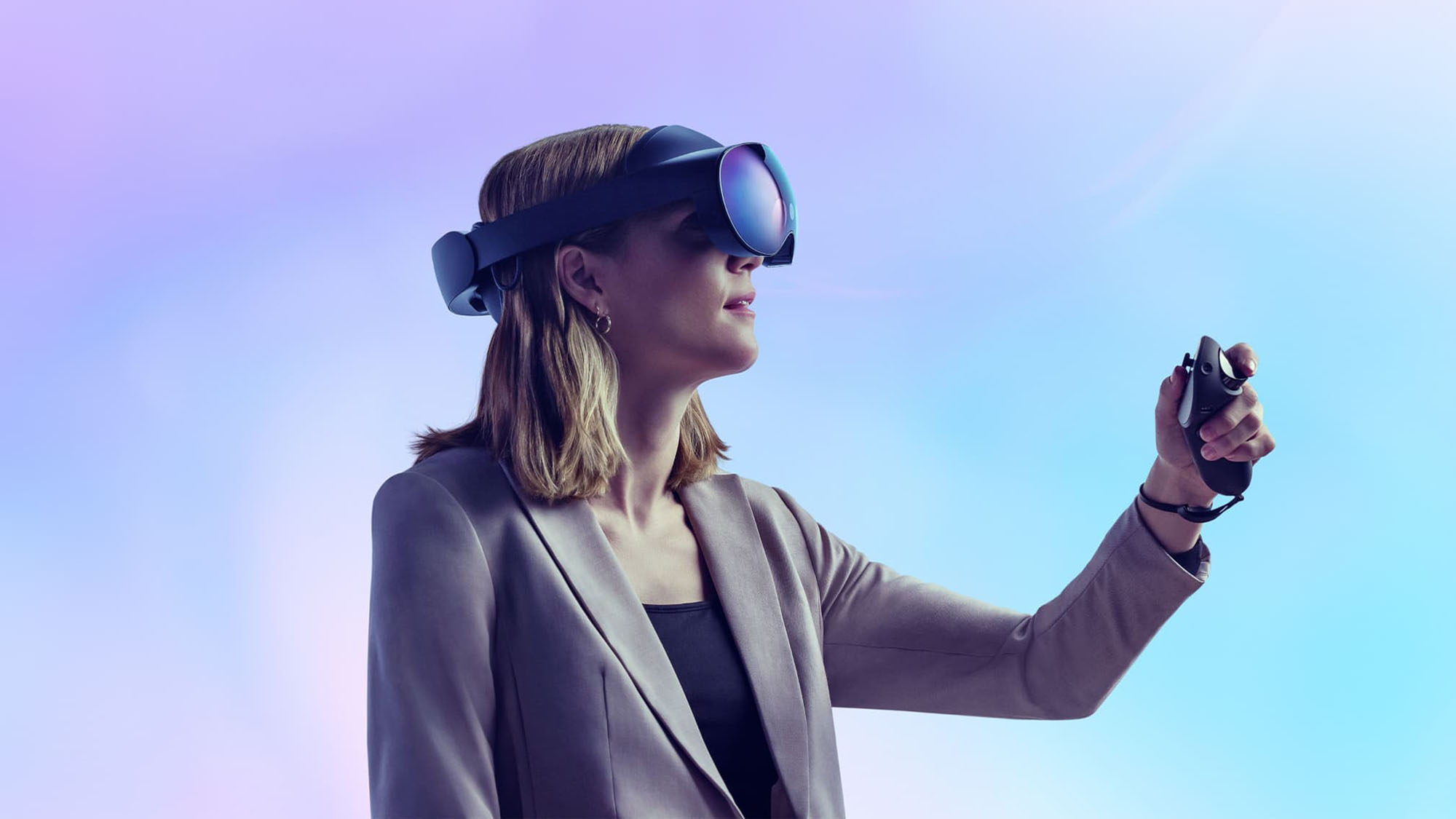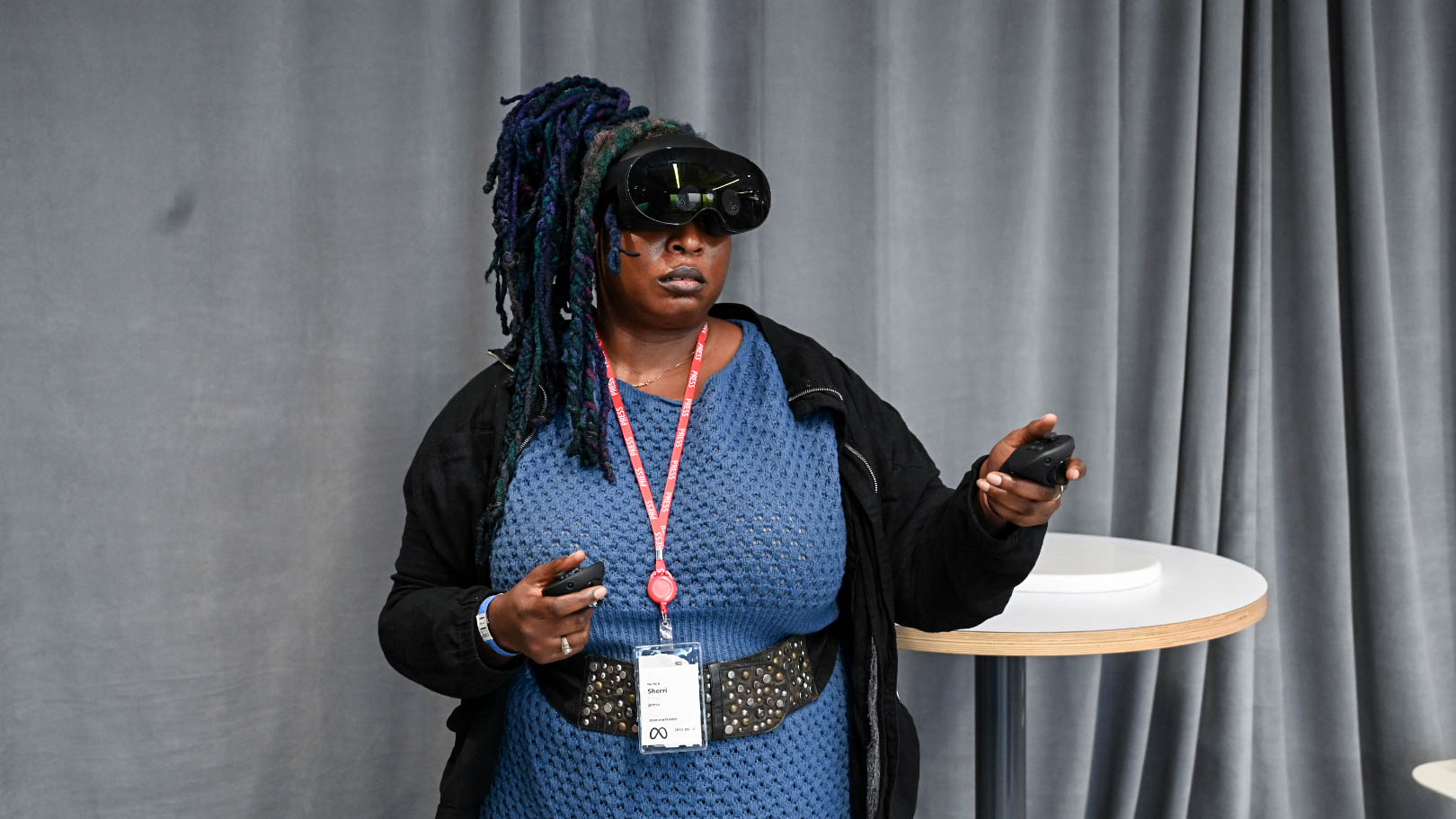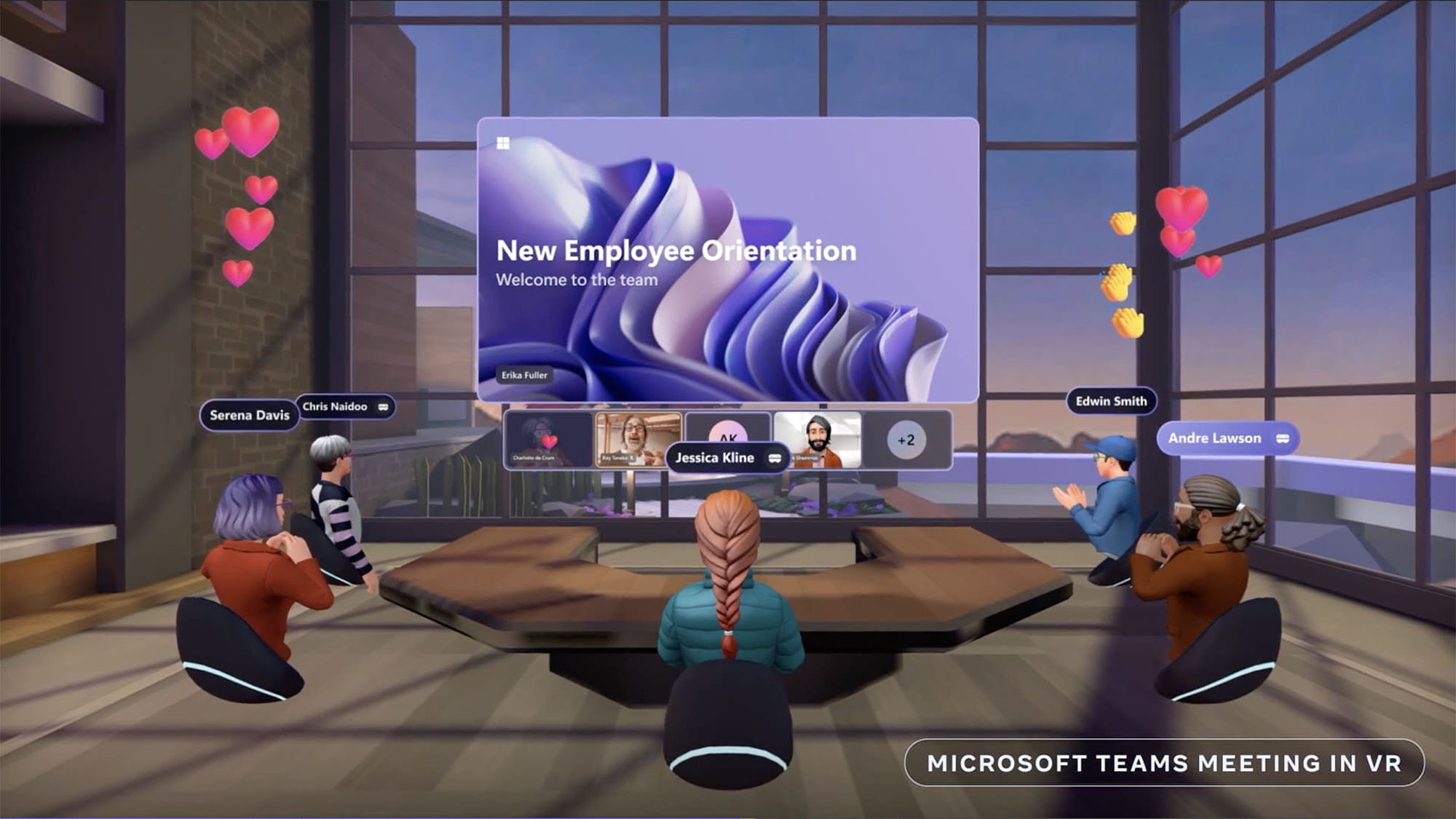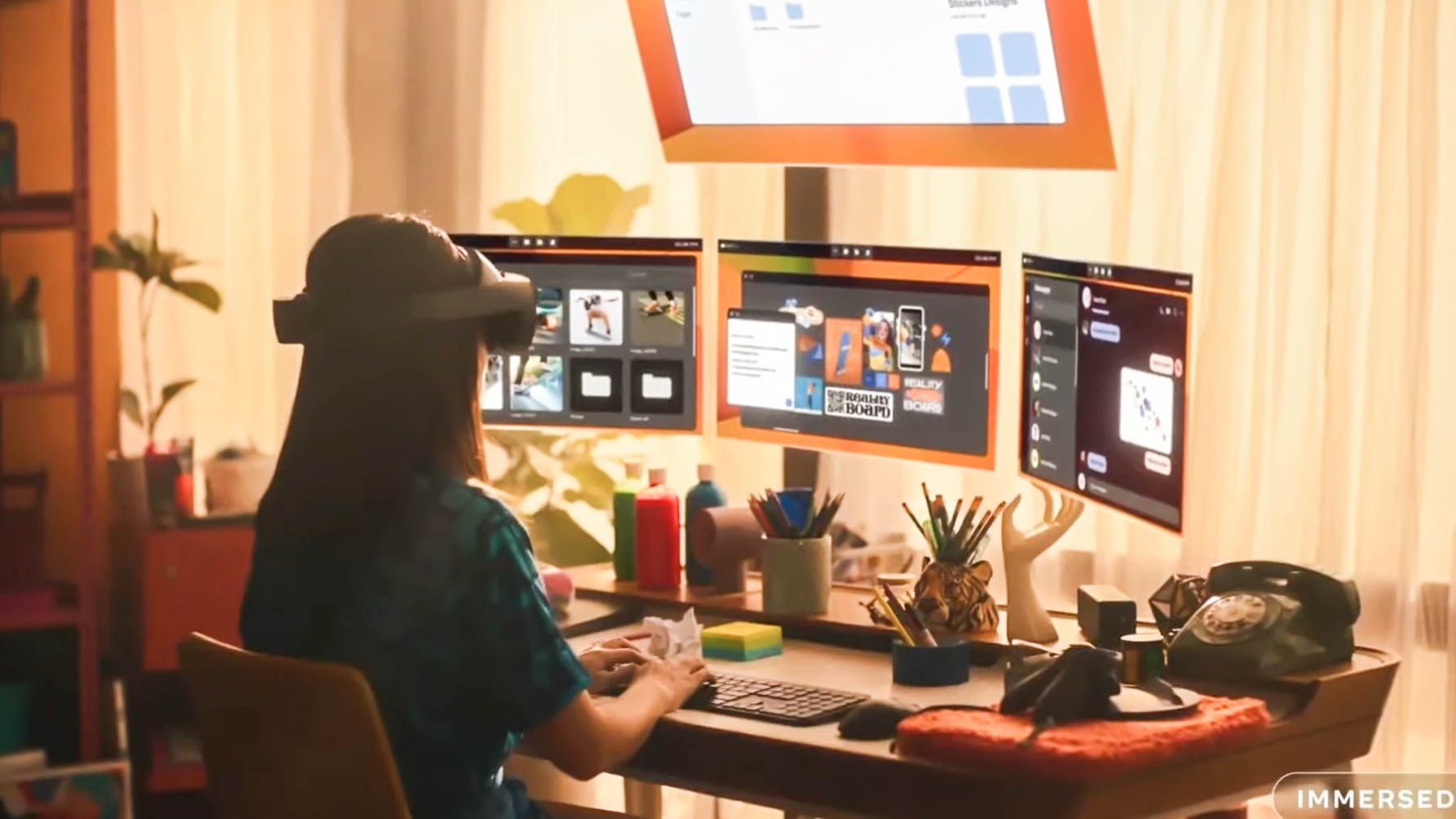The State of VR: How Meta dropped the ball
What the industry can learn from the Meta Quest Pro less-than-auspicious launch

From its meteoric rise as a Kickstarter darling to being acquired by Facebook, the Oculus Rift and its subsequent successors helped bring virtual reality into the mainstream. But last year, Facebook, now known as Meta, hit a snag with its latest headset, the Meta Quest Pro. A device that's delivering one of the best mixed-reality experiences currently available, the Quest Pro should have flown off the shelves. But due to a number of mitigating factors, the Quest Pro has been deemed somewhat of a flop which doesn't bode well for the rest of the VR, AR and MR products debuting this year.
Read on to learn how pricing and a play for the commercial and enterprise markets helped stymie an otherwise fantastic device and how Meta’s fumble can affect the market at large.
Pricing
Facebook acquired Oculus VR, Inc, in 2014 to big fanfare. The possibilities were endless with one of the most popular social media platforms combining with the VR headset du jour. To date, while the Oculus Rift and Rift 2 were lauded by the tech media, enthusiasts and early adopters alike, Oculus, HTC and a number of other VR headsets had yet to gain any headway with mainstream audiences. No matter the company, each headset faced similar problems. You needed an entire room to effectively play, the device had to be connected to a high-powered laptop or desktop and the headsets were far from cost-friendly.
The O.G. Rift cost $599, while the Rift S was priced at $399 and the Oculus Go started at $199. Meanwhile over at HTC, the original Vive and Vive Pro debuted at $799 with the Cosmos getting a slight discount at $699. However, Pro 2 was much more expensive at $1,399. And over in MR-land, you had the Microsoft Hololens which cost a budget-breaking $3,000. The Rift S and PSVR were cheap by comparison, but still required a tethered connection.
Then came the Oculus Quest (now Meta Quest) in 2019, a wireless, standalone VR headset at an affordable price. It was the first step of Meta CEO, Mark Zuckerberg’s goal to have a VR headset in every household and making VR the most social platform. Keeping the starting price at $399, the Quest proved to be a success, making $5 million in sales during the first two weeks it debuted, ultimately selling 20 million units during its life cycle. It seemed that $399 was Meta’s sweet spot as that’s what the Meta Quest 2 cost when it debuted and quickly outsold both the Xbox Series S and X during the pandemic.

And then came the highly anticipated Meta Quest Pro with its promise of seamless AR and VR experiences, advanced eye and hand tracking and Meta’s impressive catalog of games and apps. Meta also has Horizon Worlds, a virtual universe where people create their own avatars where they can interact via a number of activities including hosting events, attending NBA games or even attending a comedy show. Zuckerberg was so confident in the impending success of the metaverse, an immersive virtual world that we’d all one day be living in, he renamed the company Meta.
And how much much was this new marvel that was supposed to usher in the next wave of virtuosity? A wallet-punching $1,500. It was a far jump from the $399, consumers were accustomed to, but you pay more for bleeding edge tech right? Still, it was a hard pill to swallow, especially when it revealed that the Quest 3 is rumored to cost somewhere between $300 - $500. And then we learned the Quest 2 got a price hike But then the PS VR 2 debuted $599 and we demoed the HTC XR Elite, which recently launched for $1,000. So maybe Zuckerberg and company were on the right, albeit expensive track. However, not soon after the Elite’s price was announced, the Quest Pro’s price dropped to match it.
Stay in the know with Laptop Mag
Get our in-depth reviews, helpful tips, great deals, and the biggest news stories delivered to your inbox.
“The lower price point will help, but ultimately I don't see Meta keeping it around longer than it needs to.”
Anshel Sag, Moor Insights & Strategy
Anshel Sag, Principal Analyst, Smartphones, Wireless, PC, 5G & XR Moor Insights & Strategy say that this ultimately won’t help keep the Quest Pro afloat. “The lower price point will help, but ultimately I don't see Meta keeping it around longer than it needs to.” And it was here that we started to see a crack in Meta’s armor.
And while the headset received relatively positive reviews, including 4 stars from this publication, pricing proved to be a huge con across the board. It placed the headset outside of the reach of all but the fervent VR/AR fans and the deep pocketed. The Wall Street Journal reported that research firm IDC said Meta's headset shipments sank more than 90% over the holiday season, representing a drop from 4.5 million in Q4 of 2021 to approximately 300,000 in the closing months 2022. Keep in mind that those figures include all currently available Meta headsets, not just the Quest Pro.
However, in the end, the price was an issue for both consumers and Meta according to Sag.
“I think the Quest Pro flopped only because people's expectations were unrealistic and the price was too high, but for what's in the headset and where Meta is financially right now, it couldn't bear the cost of subsidizing an even more expensive headset.”
However, price isn’t Meta’s only misstep.
Consumer vs. Commercial & Enterprise
While the pricing is a major factor in the Meta Quest Pro’s downfall, Meta’s target consumer proved to be a bigger problem. Where all of the previous iterations of Rifts and Quests targeted mainstream consumers with a focus on gaming. Meta didn’t outright eschew that audience as the Quest Pro still works with the company’s catalog, but apps like Meta Horizon Workrooms, it’s pretty clear Meta’s trying to wrangle its way into your workspace.
According to the official Quest Pro site, the headset is “built for people like architects, engineers, builders, creators, and designers who want to augment their workflow and supercharge their creativity with the power of VR. Longer term, we expect the device to unlock a wide range of new ways to experience and improve work across many different industries and the enterprise.”

To achieve that goal, Meta teamed with Microsoft bringing the video conferencing software Teams and the Microsoft 365 suite to VR. Microsoft has also brought Microsoft Intune and Azure Active Directory support into the mix, adding security and management features that IT departments can use to manage the devices. It’s sort of like Intel vPro which allows for remote IT management which along with the Meta Quest Pro’s security measures, makes sure the headset is as secure as possible.
Sag said, “I think Meta understands that a more expensive headset needs to be targeted toward the enterprise, but I don't think many people believed its enterprise story until it partnered with Microsoft. Even so, it still very much looks like a premium headset for prosumers and developers than it does for productivity.”

Because while the Meta Quest Pro and Quest 2 do offer some productivity apps, the library is nowhere near as fleshed out as the gaming, social and creation categories. It leaves the Quest Pro in a weird spot as it doesn’t have enough apps to warrant positioning it as a productivity device, especially for the price.
And the business sector can be somewhat slow in adopting new tech and software into the workforce. Let’s look at Windows 11 adoption as an example. To date, the amount of entities that have upgraded to the new reached an 20.95% adoption rate as of March 2023 according to StatCounter Global Stats, an analyst site with Windows 10 holding the lion’s share at 73.46%.
Windows 10 end of life is scheduled for October 14, 2025, which means Windows users have a limited time before Microsoft retires the OS. If one of the most popular operating systems that’s offering free upgrades is taking this long to be adopted, getting VR headsets into the enterprise sector is going to be an uphill battle.
Beyond Quest Pro
So the Meta Quest Pro isn’t for everyone, particularly mainstream consumers. Where does that leave Meta and the rest of the industry? According to MSNBC, the industry has hit a bit of a rough patch. The end of 2022 showed VR and AR headsets sales decreased by 12% year over year worldwide with a 2% decline of headset sales in the U.S. And rumors of a price hike for the upcoming Quest 3 isn’t making that forecast look any rosier.
“This will be a struggle for them because it was quite clear that the Quest 2 price hike affected demand considerably,” says Sag. “So I think it will be important for them to communicate the value of the headset and possibly include some content bundled with the headset to entice people to buy a more expensive headset.”
So what does that mean for the Quest 3? It means that Meta has to walk a fine line. The nascent headset must incorporate just enough of Quest Pro’s new features (controllers with improved hand and finger tracking and better face and eye tracking) without breaking either consumers or Meta’s bottom line. Which means Meta has to figure out how much of the cost can it stand to subsidize and still turn a profit. One hopes that the answer is enough so the Quest 3 can stay a sub-$500 device.
"[I]t will be important for them to communicate the value of the headset and possibly include some content bundled with the headset to entice people to buy a more expensive headset.”
Anshel Sag, Moor Insights & Strategy
Because going beyond that price point seems to be a deal-breaker for consumers as Sony is quickly learning with the PS VR2. According to Forbes, the $549 tethered headset only sold approximately 270,000 units since its February 2023 launch which might indicate a slow launch in its initial five week debut. Analysts are suggesting an immediate price cut in order to right the ship.
But while Meta deals with its pricing and use case dilemmas, all eyes are on Cupertino as Apple readies its mixed-reality headset. Rumors have already priced the headset at a cost prohibitive $3,000, putting it on a par with Microsoft Hololens, which never made it into mainstream consumers’ hands. And as WWDC 2023 quickly approaches there are reports that the highly anticipated device will not make its debut, being reported pushed back amid worries of not “recreating the astounding iPhone moment,” according to CNET.
Typically, Apple is one company that can get away with charging ultra premium prices on products. Hell, the company’s stylus, the 2nd Gen Apple Pencil will set you back $129 and people still fork over their hard-earned cash, because Apple. But if the rumors are true and even Apple is worried about releasing their long-awaited take on AR.VR and MR, there is definitely cause for concern. But again, this is Apple, a company that’s renown for making incredibly strong cases for their expensive products.

Sag agrees. “I also think that Apple is going to position this as an extremely premium product that is highly elusive and exclusive and will deliver an experience and or apps that cannot be matched elsewhere. However, I believe that the vast majority of people that will buy this headset will be Apple faithful and developers wanting to dip their toes into Apple's xrOS and prepare for the more mainstream products coming down the road.”
Is there an appetite for an ultra premium headset? Sure. Companies just have to thread the needle and check off all the boxes.
“I think a $1,000 headset can be successful with consumers if it delivers an experience that is not only amazing, but better than everything else in the market today,” says Sag. “I think that's why the Quest Pro and HTC Vive XR Elite can command the premiums they do. That said, I still think for the mainstream consumer, there needs to be considerably more content and not just more content but also stickier content that keeps consumers coming back for more.”
Conclusion
Into every life a little rain must fall and that includes tech behemoths like Meta. The company took a calculated risk into the MR space with the Quest Prom introducing a host of features that captivated audiences and pushed the industry forward as a whole. However, the cost of advancement and who the improvements are actually for at this point have created a headwind for the VR industry as a whole.
In order for Meta and any other company in the VR/AR/MR space to weather the storm, they’ll need clear messaging on what the product does and who’s it for, compelling software, improved hardware and a reasonable price. Meta captured lightning in a bottle with the Quest 2, so it has the blueprint of what a successful headset launch looks like. It just needs to tailor the Quest 3’s upcoming launch in a similar fashion.
And if there is going to be a significant price hike, make it worth consumers’ time. It’s imperative as AR, MR and VR have yet to reach their full potential in transforming how we work, play and socialize. But until a solution is found, it might be another rocky year for Meta and the VR industry at large.

Sherri L. Smith has been cranking out product reviews for Laptopmag.com since 2011. In that time, she's reviewed more than her share of laptops, tablets, smartphones and everything in between. The resident gamer and audio junkie, Sherri was previously a managing editor for Black Web 2.0 and contributed to BET.Com and Popgadget.
